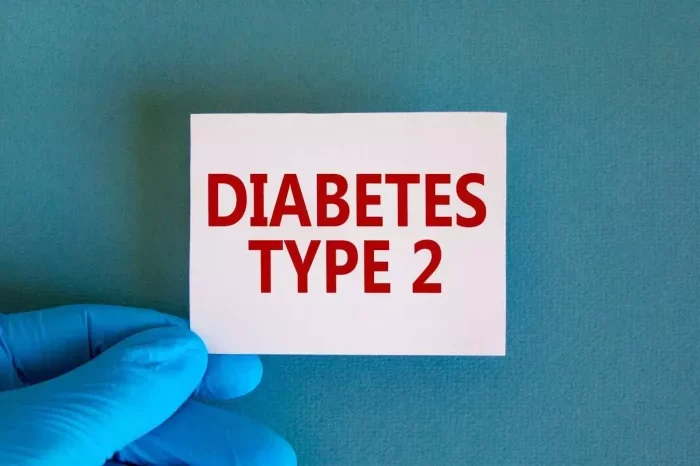Diabetes is a chronic condition characterized by elevated blood sugar levels. There are three primary types of diabetes: Type 1, Type 2, and gestational diabetes. While Type 1 diabetes and gestational diabetes are not preventable, Type 2 diabetes is largely preventable with lifestyle modifications and early intervention. This article will explore the nature of Type 2 diabetes, the risk factors associated with it, and evidence-based strategies for prevention.
Understanding Type 2 Diabetes
What is Type 2 Diabetes?
Type 2 diabetes is the most common form of diabetes, accounting for approximately 90-95% of all diabetes cases. Unlike Type 1 diabetes, where the immune system attacks insulin-producing beta cells in the pancreas, Type 2 diabetes primarily involves insulin resistance. In this condition, the body’s cells do not respond effectively to insulin, a hormone that helps regulate blood sugar levels. Over time, the pancreas cannot produce enough insulin to overcome this resistance, leading to elevated blood glucose levels.
Type 2 diabetes often develops gradually and can be asymptomatic in its early stages. When symptoms do occur, they may include increased thirst, frequent urination, fatigue, blurred vision, and slow-healing wounds. Without intervention, Type 2 diabetes can lead to serious complications such as cardiovascular disease, neuropathy, nephropathy, and retinopathy.
Risk Factors for Type 2 Diabetes
Understanding the risk factors for Type 2 diabetes is crucial for prevention. While some factors are non-modifiable, such as genetics and age, many risk factors can be addressed through lifestyle changes.
1. Genetic and Family History
Genetics play a significant role in the development of Type 2 diabetes. Individuals with a family history of diabetes are at a higher risk of developing the condition. Studies have shown that having a first-degree relative (parent or sibling) with Type 2 diabetes increases the likelihood of developing the disease. However, genetics alone do not determine the onset of Type 2 diabetes, and lifestyle factors also play a crucial role.
2. Age
The risk of Type 2 diabetes increases with age, particularly after the age of 45. This is partly due to the gradual decrease in insulin sensitivity and the cumulative effect of lifestyle factors over time. However, Type 2 diabetes is increasingly being diagnosed in younger populations, including children and adolescents, due to rising obesity rates and sedentary lifestyles.
3. Obesity and Overweight
Obesity and overweight are among the most significant risk factors for Type 2 diabetes. Excess body fat, particularly visceral fat (fat stored around the abdomen), contributes to insulin resistance. Obesity is often associated with other conditions such as hypertension and dyslipidemia, which further increase the risk of diabetes. Weight reduction has been shown to improve insulin sensitivity and lower the risk of developing Type 2 diabetes.
4. Physical Inactivity
A lack of physical activity is another major risk factor for Type 2 diabetes. Regular exercise helps regulate blood sugar levels by enhancing insulin sensitivity and promoting weight loss. Sedentary lifestyles, characterized by prolonged periods of inactivity and minimal exercise, are associated with an increased risk of Type 2 diabetes. Incorporating physical activity into daily routines can significantly reduce this risk.
5. Unhealthy Diet
Dietary habits play a crucial role in the development of Type 2 diabetes. Diets high in refined carbohydrates, added sugars, and saturated fats can contribute to weight gain and insulin resistance. Conversely, diets rich in whole grains, fruits, vegetables, lean proteins, and healthy fats are associated with a lower risk of Type 2 diabetes. The consumption of sugary beverages and processed foods should be minimized to reduce diabetes risk.
6. Smoking
Smoking is an established risk factor for Type 2 diabetes. Nicotine and other chemicals in tobacco products can impair insulin sensitivity and contribute to the development of obesity, further increasing diabetes risk. Quitting smoking can improve overall health and reduce the risk of Type 2 diabetes.
7. High Blood Pressure and High Cholesterol
Hypertension and high cholesterol levels are closely linked with an increased risk of Type 2 diabetes. Both conditions contribute to the development of insulin resistance and are often present in individuals with metabolic syndrome. Managing blood pressure and cholesterol levels through lifestyle changes and medication can help lower the risk of Type 2 diabetes.
8. Ethnicity
Certain ethnic groups are at a higher risk of developing Type 2 diabetes. For example, African Americans, Hispanic Americans, Native Americans, and Asian Americans are more likely to develop Type 2 diabetes compared to Caucasians. Genetic predisposition, combined with cultural and socioeconomic factors, contributes to these disparities. Addressing lifestyle factors within these communities is crucial for diabetes prevention.
Preventive Strategies for Type 2 Diabetes
Preventing Type 2 diabetes involves adopting a healthy lifestyle and making informed choices. Evidence-based strategies for diabetes prevention include:
1. Maintaining a Healthy Weight
Maintaining a healthy weight is one of the most effective ways to prevent Type 2 diabetes. Weight loss, even as little as 5-10% of body weight, can significantly improve insulin sensitivity and lower blood sugar levels. Strategies for weight management include:
Balanced Diet: Focus on whole, nutrient-dense foods, including fruits, vegetables, whole grains, lean proteins, and healthy fats. Avoid excessive consumption of refined carbohydrates and sugary foods.
Portion Control: Monitor portion sizes to avoid overeating and manage caloric intake.
Regular Physical Activity: Engage in at least 150 minutes of moderate-intensity exercise per week, such as brisk walking, cycling, or swimming. Include muscle-strengthening activities on two or more days per week.
2. Adopting a Healthy Diet
A healthy diet is fundamental to preventing Type 2 diabetes. Key dietary recommendations include:
Consume Fiber-Rich Foods: High-fiber foods, such as whole grains, legumes, fruits, and vegetables, can improve blood sugar control and reduce diabetes risk.
Limit Refined Carbohydrates and Sugars: Minimize intake of processed foods, sugary snacks, and beverages. Choose complex carbohydrates with a low glycemic index, which have a slower effect on blood sugar levels.
Incorporate Healthy Fats: Include sources of unsaturated fats, such as avocados, nuts, and olive oil, while reducing intake of saturated and trans fats.
3. Increasing Physical Activity
Regular physical activity is crucial for diabetes prevention. Exercise helps regulate blood sugar levels, enhances insulin sensitivity, and promotes overall health. Recommended physical activities include:
Aerobic Exercise: Engage in activities like walking, jogging, swimming, or cycling. Aim for at least 150 minutes of moderate-intensity aerobic exercise per week.
Strength Training: Incorporate resistance exercises, such as weightlifting or bodyweight exercises, to improve muscle mass and metabolism.
4. Managing Stress
Chronic stress can contribute to insulin resistance and increase the risk of Type 2 diabetes. Effective stress management strategies include:
Relaxation Techniques: Practice mindfulness, meditation, or deep breathing exercises to reduce stress levels.
Physical Activity: Regular exercise can also help alleviate stress and improve mood.
Adequate Sleep: Ensure sufficient and quality sleep, as poor sleep patterns can affect blood sugar levels and stress levels.
5. Regular Health Screenings
Regular health screenings are essential for early detection of prediabetes and diabetes. Recommended screenings include:
Blood Glucose Testing: Monitor blood sugar levels regularly, especially if you have risk factors for Type 2 diabetes.
A1C Testing: An A1C test measures average blood glucose levels over the past two to three months. An A1C level of 5.7% or higher indicates prediabetes.
6. Avoiding Tobacco Use
Quitting smoking has numerous health benefits, including reducing the risk of Type 2 diabetes. Smoking cessation can improve insulin sensitivity and overall health. Seek support from healthcare providers, smoking cessation programs, or counseling services to quit smoking effectively.
7. Managing Existing Health Conditions
Effective management of hypertension and high cholesterol is crucial for diabetes prevention. Strategies include:
Medication Adherence: Follow prescribed medications for blood pressure and cholesterol management.
Lifestyle Modifications: Incorporate dietary changes, exercise, and stress management techniques to support cardiovascular health.
See also: What Are the Effects of Hypoglycemia?
Conclusion
Type 2 diabetes is a preventable condition that can be effectively managed through lifestyle modifications and early intervention. By addressing modifiable risk factors such as obesity, physical inactivity, and poor dietary choices, individuals can significantly reduce their risk of developing Type 2 diabetes. Maintaining a healthy weight, adopting a balanced diet, increasing physical activity, managing stress, and avoiding tobacco use are essential strategies for diabetes prevention. Regular health screenings and effective management of existing health conditions further support the prevention and early detection of Type 2 diabetes. By taking proactive steps, individuals can protect their health and reduce the burden of Type 2 diabetes on themselves and their communities.
Related topics:
What Is the Most Common Trigger for Type 2 Diabetes?



























